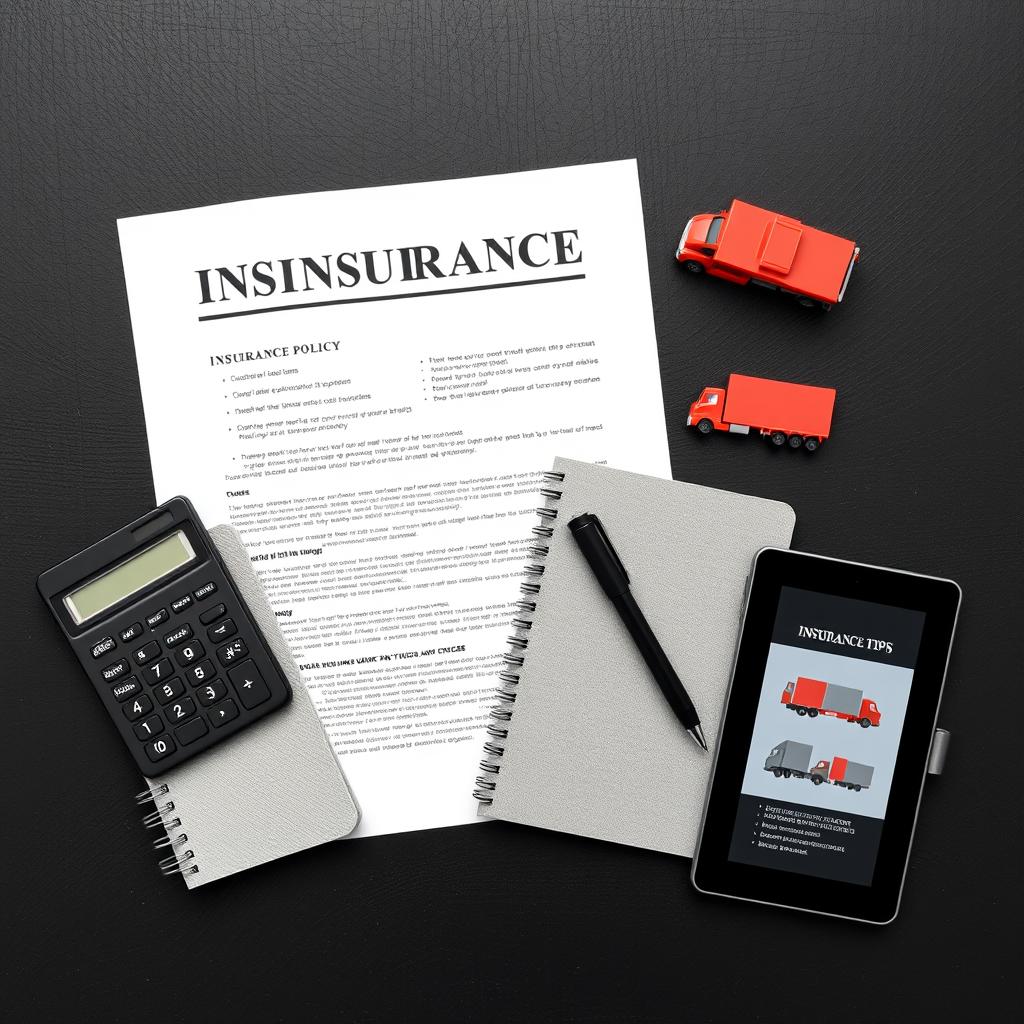When it comes to trucking, one of the most critical aspects of your business is insurance. Navigating the world of trucking insurance can feel overwhelming, but understanding the essentials can make the process smoother. In this blog post, we’ll break down 6 essential steps to help you navigate trucking insurance like a pro. Whether you’re a seasoned owner-operator or a newcomer, this guide is designed to help you make informed decisions. Let’s get started!
Step 1: Understand the Basics of Trucking Insurance
Before diving into the specifics, it’s vital to understand what trucking insurance is and why it’s essential. Trucking insurance protects you from financial loss due to accidents, liability claims, cargo theft, and other unforeseen events.
Here’s a quick rundown of some key terms:
- Liability Insurance: Covers damages to other people and properties if you are at fault in an accident.
- Cargo Insurance: Protects your cargo from damage or theft during transit.
- Physical Damage Insurance: Covers repairs for your truck and trailer if they are damaged.
- Uninsured/Underinsured Motorist Coverage: Protects you if you’re in an accident with a driver who has little or no insurance.
Knowing these terms will help you better understand and evaluate your insurance options.
Step 2: Assess Your Insurance Needs
Every trucking business is unique, and so are its insurance needs. To determine what type of coverage you require, consider the following factors:
- Size of Your Fleet: More trucks typically mean higher insurance costs, but also potentially more savings through bulk policy options.
- The Nature of Your Cargo: Hazardous materials may require specialized coverage.
- Geographic Area: Different states have varying regulations and risks.
- Your Driving Record: A clean driving record can lead to discounts.
- Type of Operation: Whether you are an owner-operator or a fleet manager can influence your coverage needs.
Taking the time to evaluate these factors will help you choose an insurance policy tailored to your business.
Step 3: Research Insurance Providers
Once you’ve assessed your needs, it’s time to research insurance providers. Not all insurance companies are created equal, and finding the right one can save you time, money, and stress.
Here are some tips on how to find reputable trucking insurance providers:
- Look for Specialization: Choose companies that specialize in trucking insurance, as they will be more familiar with the nuances of the industry.
- Read Reviews: Online reviews and testimonials can provide insights into how reliable a company is.
- Ask for Recommendations: Reach out to fellow truckers or industry friends for their experiences with various providers.
- Compare Quotes: Don’t settle for the first quote you receive. Comparing multiple quotes can help you find the best value.
Taking these steps will help ensure that you find an insurance provider that meets your needs.
Step 4: Understand the Costs Involved
Insurance costs can vary significantly based on several factors. Here’s what to keep in mind:
- Type of Coverage: Comprehensive coverage will be more expensive than basic liability insurance.
- Deductibles: A higher deductible can lower your premium but means more out-of-pocket costs in the event of a claim.
- Credit History: Your credit score can impact your insurance rates, as providers often see it as an indicator of risk.
- Annual Mileage: The more you drive, the higher the premium tends to be.
- Driver Experience: Experienced drivers usually qualify for lower rates compared to those with less experience.
Understanding these factors will help you estimate your possible insurance costs and budget appropriately.
Step 5: Review Coverage Annually
Once you have your insurance in place, it’s important to review it regularly, ideally on an annual basis. Here’s why:
- Changes in Your Business: If you expand your fleet or change the types of cargo you transport, you may need different coverage.
- Market Changes: Insurance rates can change, and you might find a better deal elsewhere.
- New Risks: Emerging risks, such as cybersecurity threats, may require you to adjust your coverage.
- Discounts: Companies often update their discount offerings, so it’s worth re-evaluating your current policy.
By staying proactive about your insurance review, you can ensure that you are adequately protected and not overpaying for coverage.
Step 6: Understand the Claims Process
Filing a claim is often when most business owners realize the importance of having good insurance. However, understanding the claims process before a mishap occurs can save you a lot of headaches.
Here’s what to keep in mind:
- Report the Incident ASAP: Notify your insurance company as soon as you have an incident. Delays can complicate the claims process.
- Gather Documentation: Take photos, gather witness statements, and compile any other evidence to support your claim.
- Know Your Policy Limits: Understand what your policy covers to ensure you’re not left with unexpected out-of-pocket expenses.
- Follow Up: Stay in touch with your insurance adjuster to check the status of your claim.
Being prepared can make a stressful situation much easier to handle.
Final Thoughts: Navigating the Road Ahead
Trucking insurance doesn’t have to be a daunting aspect of your business. By following these 6 essential steps, you can navigate the complexities of trucking insurance with confidence. Remember to:
- Understand the basics of trucking insurance.
- Assess your unique insurance needs.
- Research and compare trusted insurance providers.
- Be aware of the costs involved.
- Review your coverage annually.
- Understand the claims process to be better prepared.
In the end, the right insurance gives you peace of mind, allowing you to focus on what you do best—keeping America moving. Here’s to safe travels and prosperous trucking!
If you have any questions or need further clarification about trucking insurance, feel free to leave a comment below or reach out to an insurance professional. Happy trucking!







